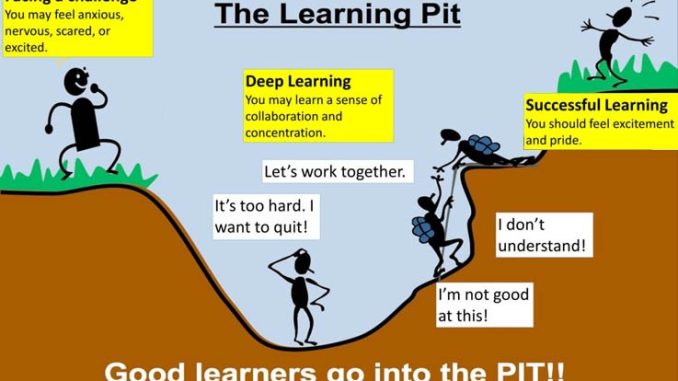
The journey through education, whether in primary school, university, or a professional development program, is rarely a smooth, upward trajectory. Almost inevitably, every student encounters periods where they feel profoundly “stuck”—a sense of stagnation, frustration, or overwhelming difficulty that seems to halt all progress. This feeling can manifest as a struggle with a particular subject, a loss of motivation, an inability to manage workload, or even a broader questioning of one’s academic path. While common, feeling stuck is not a permanent state; it is a signal, an opportunity for reflection and strategic adjustment. Understanding how to navigate these challenging periods is a vital life skill, transforming potential roadblocks into stepping stones for growth and resilience.
The very first step when feeling stuck is to **acknowledge the feeling without judgment**. It’s easy to fall into a trap of self-criticism, believing that feeling stuck is a sign of personal failure or inadequacy. This negative self-talk only exacerbates the problem, creating a psychological barrier that makes it harder to seek solutions. Instead, view the feeling as a neutral piece of feedback from your brain, indicating that your current approach might not be working or that you’ve hit a genuine point of complexity. Recognize that this is a normal part of any challenging endeavor. For instance, a student struggling with a complex mathematical concept might initially feel frustrated and unintelligent. A more productive response is to acknowledge, “Okay, this concept is proving difficult right now. What do I need to do differently?” This shift in perspective opens the door to problem-solving rather than self-blame.
Once acknowledged, the next crucial action is to **pinpoint the specific nature of the problem**. “Feeling stuck” is a broad symptom that can stem from various underlying causes. Is it a lack of understanding of the core material? Is it difficulty with a specific type of assignment? Is it time management issues, external stressors, or a lack of motivation rooted in disinterest? For example, a student might feel stuck in a history class. Is it the volume of reading? The challenge of historical analysis? A dislike for the teaching style? By breaking down the amorphous feeling into specific, identifiable components, the problem becomes less overwhelming and more actionable. This analytical approach is akin to a doctor diagnosing an illness; you can’t prescribe a solution until you understand the root cause.
With clarity about the problem, the next powerful step is to **seek external perspective and support**. Isolation often amplifies the feeling of being stuck. Reaching out to others can provide fresh insights, practical strategies, and much-needed emotional support. This could involve speaking to a teacher or professor during office hours, consulting a school counselor, discussing with a trusted peer or study group, or even talking to family members. A student overwhelmed by a research paper might find immense relief and direction by simply breaking down the task with their professor, who can offer guidance on scope, resources, or effective writing strategies. Teachers are often more approachable and willing to help than students might assume, viewing such outreach as a sign of engagement rather than weakness.
Furthermore, **revisiting and adapting your learning strategies** is essential. If what you’re currently doing isn’t working, a change is necessary. This might involve exploring different study techniques, such as active recall or spaced repetition, if passive reading isn’t yielding results. It could mean changing your study environment, experimenting with different times of day, or breaking down tasks into smaller, more manageable chunks. For a student struggling with procrastination, setting a timer for 25 minutes of focused work followed by a 5-minute break (the Pomodoro Technique) might re-ignite their momentum. This flexibility and willingness to experiment with new approaches prevents stagnation and helps you discover what truly works for your unique learning rhythm.
Finally, and perhaps most importantly, **reconnect with your purpose and celebrate small wins**. The feeling of being stuck can often erode motivation by obscuring the initial reasons you embarked on your educational journey. Taking time to reflect on your long-term goals, the value of the knowledge you’re acquiring, or the doors it might open, can rekindle your drive. Simultaneously, setting small, achievable goals and celebrating their completion, no matter how minor, can rebuild momentum. If a large project feels insurmountable, focus on completing just one section or even one paragraph. The sense of accomplishment from these mini-victories creates a positive feedback loop, gradually pulling you out of the rut. Remember, progress is rarely linear. Feeling stuck is a common, though challenging, part of the learning process. By acknowledging the feeling, dissecting the problem, seeking support, adapting strategies, and reconnecting with purpose, students can transform these moments of stagnation into powerful opportunities for deeper learning and personal resilience, ensuring their continued momentum on the educational path.